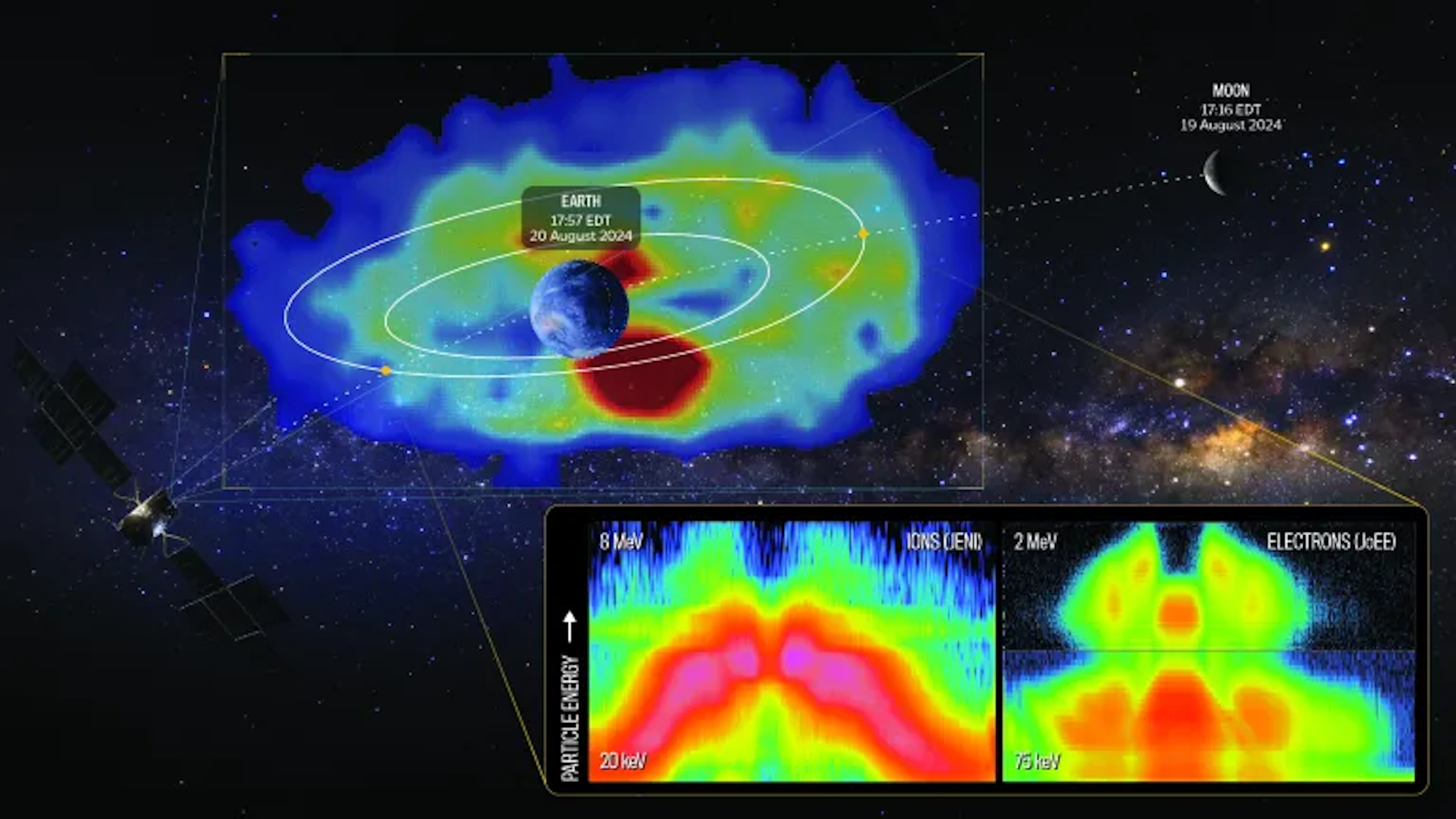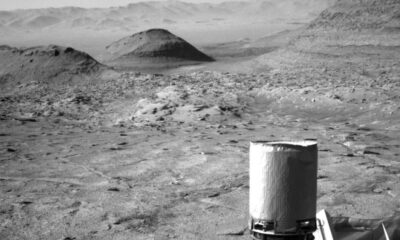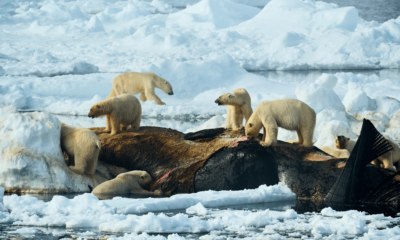Gadgets
NASA captured the clearest ever images of Earth’s radiation belt

NASA has recently unveiled the most detailed images ever captured of Earth’s magnetosphere radiation belt. The spacecraft responsible for this remarkable achievement was not only designed to study this crucial atmospheric region that protects the planet from harmful cosmic rays but is also on its way to Jupiter for a multi-year mission.
Launched on April 14, 2023, the European Space Agency’s Jupiter Icy Moons Explorer (JUICE) probe is currently en route to the Solar System’s largest planet. Upon its arrival in July 2031, JUICE will study Jupiter’s magnetosphere while also conducting research on three of its 79 moons: Callisto, Europa, and Ganymede. Before reaching Jupiter, the spacecraft will utilize the gravitational forces of multiple planets to adjust its speed and trajectory. NASA engineers are maximizing the opportunity of the first close encounter.
The agency revealed the new images and the historic lunar-Earth flyby and double gravity assist maneuver in an announcement on October 1. Starting on August 19, the Jovian Energetic Electrons (JoEE) instrument was activated as JUICE passed 465 miles above the lunar surface, collecting data on the space environment around the Moon’s influence on Earth’s natural satellite. This successful trial run will be expanded once JUICE approaches Jupiter.
Continuing its journey, on August 20, JUICE traversed through Earth’s magnetosphere 37,000 miles above the Pacific Ocean. The Jovian Energetic Neutrals and Ions (JENI) instrument, developed by the Johns Hopkins Applied Physics Laboratory (APL), underwent a stress test, capturing energized neutral atoms emitted by charged particles interacting with Earth’s atmospheric hydrogen gas.
Pontus Brandt, APL’s principal investigator for JoEE and JENI, expressed excitement about the data collected during the flyby, stating, “The richness of the data from our deep-dive through the magnetosphere is astounding. JENI’s image of the entire system we just flew through was the cherry on top. It’s a powerful combination we will exploit in the Jovian system.”
[Related: Jupiter’s moons are about to get JUICE’d for signs of life.]
While space probes can withstand the intense plasma clouds around Earth, the Van Allen radiation belt poses significant challenges for human missions to the Moon and Mars. NASA will use the data from JENI and JoEE to improve planning for future space travel endeavors.
As for JUICE, it is now heading towards Venus for a gravitational slingshot in August 2025, returning to Earth for additional passes in September 2026 and January 2029 before continuing its journey to Jupiter.
-

 Destination8 months ago
Destination8 months agoSingapore Airlines CEO set to join board of Air India, BA News, BA
-

 Breaking News10 months ago
Breaking News10 months agoCroatia to reintroduce compulsory military draft as regional tensions soar
-

 Gadgets3 months ago
Gadgets3 months agoSupernatural Season 16 Revival News, Cast, Plot and Release Date
-

 Tech News12 months ago
Tech News12 months agoBangladeshi police agents accused of selling citizens’ personal information on Telegram
-

 Productivity11 months ago
Productivity11 months agoHow Your Contact Center Can Become A Customer Engagement Center
-

 Gadgets3 weeks ago
Gadgets3 weeks agoFallout Season 2 Potential Release Date, Cast, Plot and News
-

 Breaking News10 months ago
Breaking News10 months agoBangladesh crisis: Refaat Ahmed sworn in as Bangladesh’s new chief justice
-

 Toys12 months ago
Toys12 months ago15 of the Best Trike & Tricycles Mums Recommend























